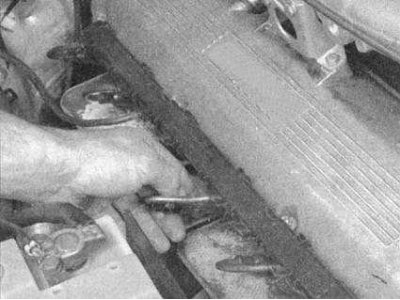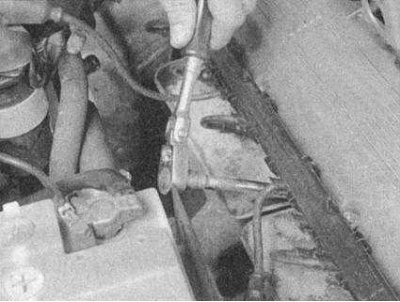
Tools needed to change spark plugs.
- 1 - The head of the candle key - equipped with a special soft insert to protect the porcelain insulator of the candle
- 2 - Torque wrench - although it is not an essential tool, it gives the maximum guarantee of the correct tightening force of the candles
- 3 - Ratchet drive - standardly supplied with a candle wrench
- 4 - Extension - depending on the model of the car and its accessories, you may need special extensions and universal joints to provide access to the candles.
- 5 - Spark Gap Gauge - This tool for checking the spark plug gap is available in various versions. Make sure you have a gauge for your vehicle's clearance. Feeler blades can be used instead
Before starting work, prepare all the necessary tools, which include a replaceable spark plug head and a set of feeler blades. Some spark plug manufacturers supply special tools to measure the spark plug gap.
The best way to replace spark plugs is to buy new spark plugs in advance, adjust their gap, and replace each spark plug in turn. When buying candles, it is very important to choose exactly those candles that are designed for the engine of your car. Information about them can be found in the Specifications for the Chapter Engine electrical system.
With new spark plugs on hand, let the engine cool completely before removing the old ones. During this time, you can inspect new spark plugs for defects and check spark plug gaps.
1. The spark plug gap is checked by inserting a gauge of the desired thickness between the electrodes at the end of the spark plug. The clearance must be as specified in Specifications. The wire should only touch each of the electrodes. If the gap is not correct, slightly bend the bent part of the electrode using a knurled adjuster until the desired gap is reached.
Note. When adjusting the gap of a new spark plug, bend only the base of the ground electrode without touching its end. If the ground electrode is offset from the center electrode, use the knurled adjuster to align them. Check the porcelain insulator for cracks, indicating that the spark plug needs to be replaced.

Spark plug manufacturers recommend using wire-type gauges to determine the spark plug gap - if the measuring element does not slip between the spark plug electrodes with slight resistance, then the gap needs to be adjusted.

To adjust the gap, bend only the ground electrode as indicated by the arrows in the picture, and be extremely careful not to damage the porcelain insulator around the center electrode.
2. With the engine cold, disconnect the BB wire from one of the spark plugs. At the same time, do not pull on the wire itself, hold on to the connector at its end. Sometimes a twisting motion is required to disengage the connector.

When disconnecting the BB wires of the spark plugs, hold only the connector.
2. If possible, use compressed air to blow dirt and foreign material out of the area around the spark plugs. You can use a regular bicycle pump for this. This is done to avoid the possibility of debris entering the cylinder after the candles are removed.
3. Install the spark plug socket onto the spark plug and remove the spark plug from the engine by unscrewing it counterclockwise.

To loosen the spark plugs, use a socket wrench with an extension.
4. Compare the removed candle with those shown in the pictures in the Chapter Engine electrical system, this will give you useful information about the general condition of the engine.
5. Apply a small amount of copper anti-seize compound to the threads of the new spark plug. Insert the spark plug into the cylinder head and screw it in with your fingers until it stops, then tighten it with the head of the spark plug wrench. If possible, use a torque wrench to tighten the spark plug to make sure it is installed correctly. The tightening force of the candles is included in Specifications.
Note. Place a small piece of rubber hose or plastic tube over the spark plug shank to avoid the possibility of the spark plug being screwed in out of thread. The flexible tube will work as a universal joint, ensuring that the spark plug is aligned with the spark plug socket, and if the spark plug starts to warp, the hose will slip on it, making it impossible to strip the threads.
6. Before connecting to a high-voltage spark plug (BB) wire, carefully inspect it as described in Section Checking and replacing spark plug wires, cover and distributor slider.
7. Connect the wire to the installed new spark plug, again using a twisting motion and holding the connector until it is fully seated on the spark plug.
8. Repeat the above procedure for the remaining spark plugs in sequence to avoid incorrectly connecting the spark plug wires.